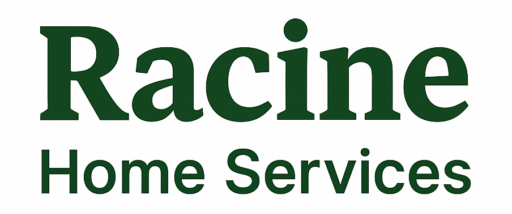Winter in Wisconsin means your furnace is working overtime to keep your home comfortable. But what happens when it’s not performing the way it should? No need to panic—many furnace problems have simple solutions that you can tackle on your own. This guide covers five of the most common furnace issues, with practical steps to get your heat back on track.
1. Furnace Won’t Turn On
When the temperature drops and your furnace won’t start, it can feel like an emergency. Fortunately, the solution is often straightforward.
Quick Fixes:
- Thermostat Check: Ensure your thermostat is set to “heat” mode and the temperature is higher than the current room temperature.
- Circuit Breaker Reset: Verify that the furnace breaker hasn’t tripped in your electrical panel.
- Power Switch: Double-check that the furnace switch (usually near the unit) is in the “on” position.
- Pilot Light or Ignition: If your furnace uses a pilot light, make sure it’s lit. Newer systems with electronic ignition may need resetting.
If these steps don’t work, there could be a deeper electrical issue or a malfunction with the control board.
2. Furnace Blows Cold Air
Nothing is more frustrating than a furnace that’s running but only blowing cold air. This problem often has a simple fix.
Quick Fixes:
- Thermostat Settings: Make sure the fan setting is set to “auto” rather than “on.” The “on” setting keeps the fan blowing even when the furnace isn’t heating.
- Air Filter Replacement: Clogged filters can cause the heat exchanger to overheat and shut off, leaving only the fan running.
- Pilot Light Issues: For older units, a blown-out pilot light can cause cold air to circulate.
- Gas Supply Check: Ensure the gas valve is open and the gas supply is active.
A furnace blowing cold air may also indicate a more serious issue, such as a faulty limit switch or igniter, in which case you might need professional help.
3. Uneven Heating Throughout the Home
Are some rooms toasty while others feel like an icebox? Uneven heating is a common issue, especially in multi-level homes.
Quick Fixes:
- Open and Adjust Vents: Ensure vents in all rooms are open. You can adjust the dampers to direct more warm air to colder areas.
- Seal Duct Leaks: Leaky ducts can let warm air escape before it reaches certain rooms. Use duct tape or mastic to seal gaps.
- Check Insulation: Rooms with poor insulation may stay cooler, even with the furnace running. Consider adding insulation to problem areas.
- Use a Programmable Thermostat: A smart thermostat can balance temperatures more effectively by running in short cycles throughout the day.
If uneven heating persists, a professional duct inspection might uncover hidden problems.
4. Furnace Turns On and Off Frequently (Short Cycling)
Short cycling means your furnace turns on, runs for a short time, and then shuts off repeatedly. This wastes energy and causes unnecessary wear and tear on your system.
Quick Fixes:
- Replace the Air Filter: A clogged filter can cause the furnace to overheat and shut off to prevent damage.
- Check the Thermostat Location: If the thermostat is near a heat source or direct sunlight, it might signal the furnace to shut off too early.
- Inspect the Flame Sensor: A dirty flame sensor might shut the furnace off prematurely. Cleaning it with fine sandpaper can help.
- Examine Vent Blockages: Make sure vents and ducts are clear and open to prevent airflow problems.
If these steps don’t solve the issue, it could indicate a problem with the furnace size or control board.
5. High Energy Bills Without Increased Use
Heating bills tend to rise in winter, but if your energy costs spike dramatically without explanation, it’s time to investigate.
Quick Fixes:
- Replace Dirty Filters: Clogged filters make the furnace work harder, increasing energy consumption.
- Seal Windows and Doors: Drafts force your furnace to run longer to maintain temperature. Use weatherstripping or caulk to seal gaps.
- Check for Duct Leaks: Leaking ducts allow warm air to escape, wasting energy.
- Use a Programmable Thermostat: Lower the temperature at night and when you’re away to save energy.
- Schedule an HVAC Tune-Up: A poorly maintained furnace won’t run efficiently. Annual maintenance ensures your system performs at its best.
Addressing these issues can help you lower your heating bills and keep your home warm without breaking the bank.
Conclusion
Furnace problems can be stressful, especially during Wisconsin’s harsh winters. Fortunately, many common issues have simple fixes that homeowners can handle without professional help. From clogged filters to thermostat settings, a little troubleshooting can go a long way in keeping your furnace running smoothly. Stay ahead of problems by replacing filters regularly, sealing air leaks, and scheduling routine maintenance.
If your furnace continues to act up after trying these solutions, it might be time for a professional inspection to avoid larger issues down the road. Stay warm, stay proactive, and enjoy a comfortable Wisconsin winter!
